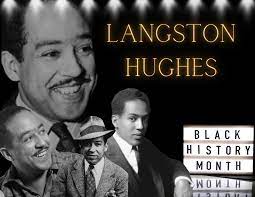Facts about the legacy of Langton Hughes
Langston Hughes wrote, “An artist must be free to choose what he does, certainly, but he must also never be afraid to do what he might choose.”
- James Mercer Langston Hughes was born February 1, 1901, in Joplin, Missouri.
- In November 1924, he moved to Washington, D.C. Hughes’s first book of poetry, The Weary Blues, (Knopf, 1926) was published by Alfred A. Knopf in 1926 with an introduction by Harlem Renaissance arts patron Carl Van Vechten.
- In 1930 his first novel, Not Without Laughter (Knopf, 1930), won the Harmon gold medal for literature.
- Hughes refused to differentiate between his personal experience and the common experience of black America. He wanted to tell the stories of his people in ways that reflected their actual culture, including their love of music, laughter, and language itself alongside their suffering.
- His life and work were enormously important in shaping the artistic contributions of the Harlem Renaissance of the 1920s.
- Langston Hughes died of complications from prostate cancer on May 22, 1967, in New York City. In his memory, his residence at 20 East 127th Street in Harlem has been given landmark status by the New York City Preservation Commission, and East 127th Street has been renamed “Langston Hughes Place.”
- Hughes's birth year was revised from 1902 to 1901 after new research from 2018 uncovered that he had been born a year earlier.
- While Hughes is best known for his poetry — often marked with lyrical patterns — he also wrote novels like 1929’s Not Without Laughter, short stories like his 1934 collection The Ways of White Folks, his 1940s autobiography The Big Sea and lyrics for the Broadway musical Street Scene. He even worked as a war correspondent during the Spanish Civil War in 1937 for several American papers and as a columnist for the Chicago Defender.
